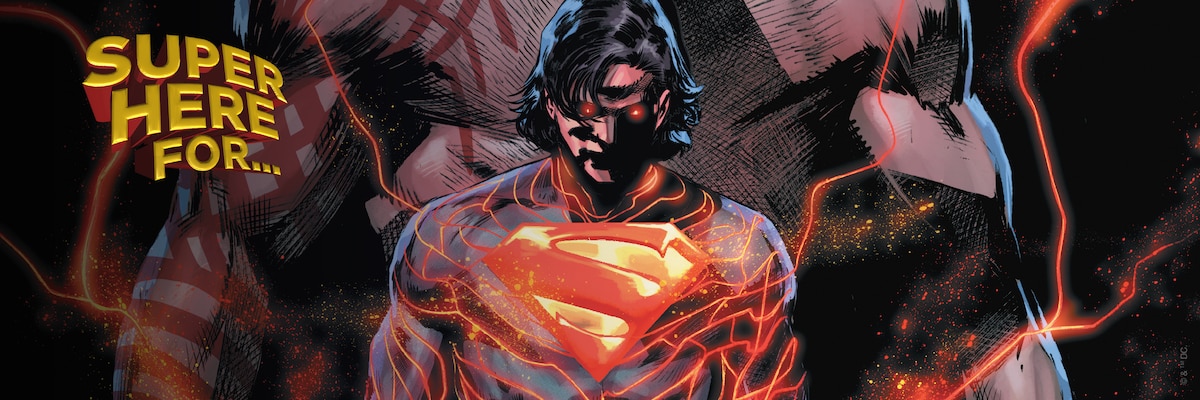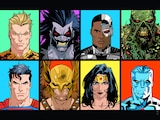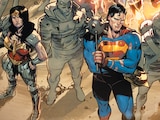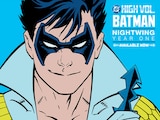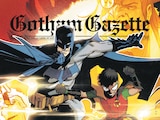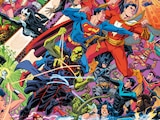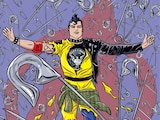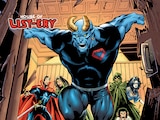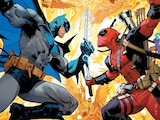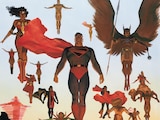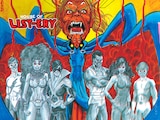It’s a great time for Superman fans, with the Man of Steel soaring into movies, TV, animation and comics. To help us stay on top of it, writer Tim Beedle shares what's grabbed his attention and why in this monthly Super-Family column.
All you have to do is turn on the news or glance at social media to know that there are a lot of angry people out there in the world. For better or for worse, anger seems to be what’s driving…well, pretty much everything these days. I’ve certainly felt angry a lot this year. I’d imagine you have too. But one person whom I never would have thought was driven by anger was Superman.
At least not until reading Jason Aaron, Rafa Sandoval and Carmine Di Giandomenico’s Absolute Superman.
I would hope most of you are familiar with the Absolute universe by now, but for anyone who isn’t, it’s an alternate world established last year that allows DC and its creators to reimagine some of their biggest heroes through a modern lens. Absolute Superman offers an example of what the Man of Steel might be like if he were created in 2025 rather than 1938.
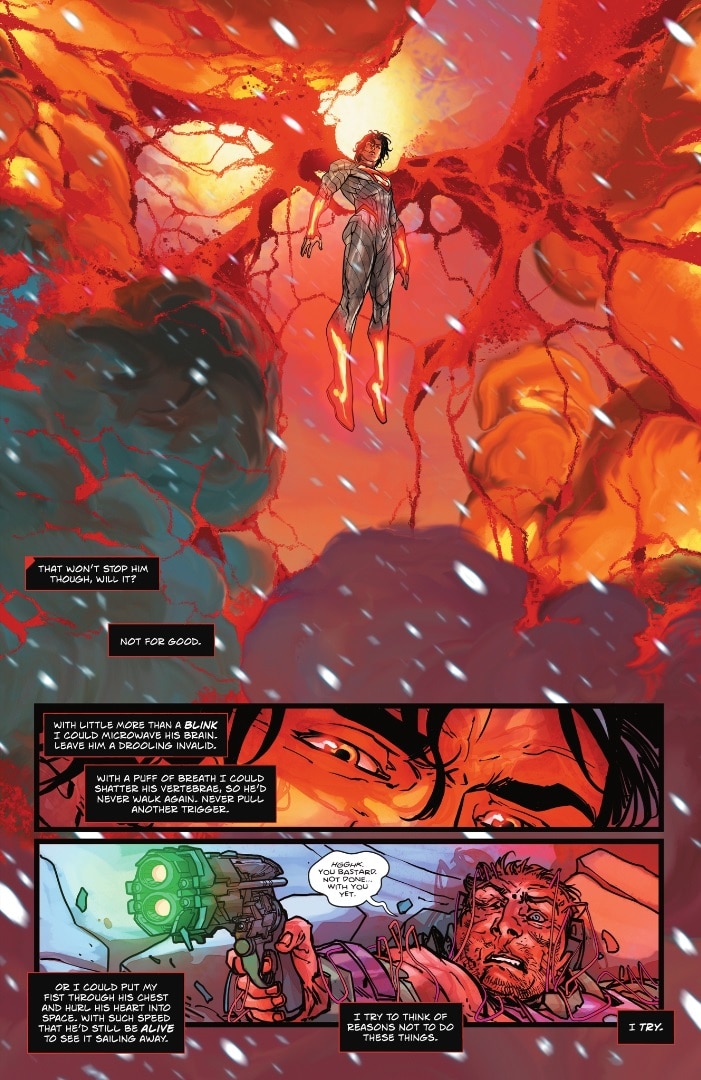
Which brings us back to anger. To say that Superman has never gotten angry over his 87 years of existence would be incorrect. He’s as emotional as the rest of us. However, the Kal-El of the mainline DC Universe realizes the danger in allowing that anger to overwhelm him to the point of losing control. He knows that when he lashes out in rage, the destruction is likely to be substantial. Buildings could burn, mountains could crumble and societies could collapse (we’ve seen a powerful example of this in Injustice). Most worrisome of all, people could die. Even at his most wrathful, the Superman we’re most familiar with never loses sight of this and remains in control.
The story of the Absolute universe’s Kal-El is still being written, however, and the more we get of it, the clearer it becomes that this is a very different Superman. For one thing, he doesn’t like being called “Superman.” He’s never elaborated on why he doesn’t like it, but it’s easy enough to hazard a guess. “Superman” is an idealistic label suggesting someone who is much better than the rest of us. That’s not how Kal-El sees himself at all. Absolute Kal-El was much older when he escaped Krypton’s destruction than his mainline counterpart and had a close relationship with his parents and a deeper understanding of the serious problems in Kryptonian society.
Kal-El realizes he’s the product of a deeply flawed world who’s now doing what he can to prevent another deeply flawed world from making all the same mistakes. And that means standing up to the cruel, abusive, authoritarian corporation that’s profiting off of the labor and livelihoods of the working class the world over—much like the self-serving Science League did on Krypton. Against the Science League, Kal-El and his parents were helpless, but that’s not the case here on Earth against the fearsome Lazarus Corporation.
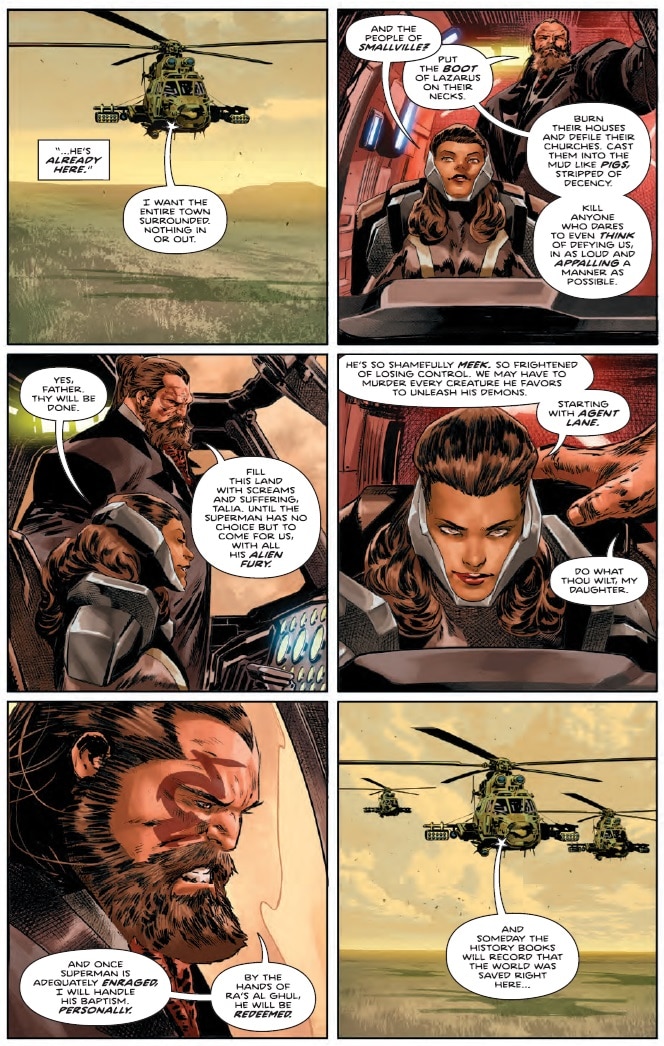
And so, the young Kal-El finds himself walking a difficult tightrope. He strives to remain a noble champion, standing up and using just enough force to prevent the injustices he sees without succumbing to the rage he feels after witnessing his parents and world succumb to the same injustice. It’s an ongoing internal struggle, and at times it truly does feel like he’s on the brink of giving in to the anger and unleashing his full abilities, knowing full well his enemies won’t survive them.
Alarmingly, we’re not the only ones aware of this. As Absolute Superman has continued, we’ve learned that the head of Lazarus, Ra’s al Ghul, has come to see the powerful Superman as his rightful son and heir. (It’s a subversion of the Ra’s al Ghul we’re more accustomed to, who has viewed Batman—usually DC’s most vengeful superhero—in a similar way.) To bring this about, Ra’s al Ghul and his head of Research and Development, Brainiac, attempt to encourage Kal-El’s anger, seeing it as the key to manipulating him and getting him in their camp.
It's an understandable approach. Anger has always been a powerful motivator. We see that every day. Politicians, commentators, corporations…heck, even charitable organizations all use anger to stoke action. It’s something that our society has become unnervingly good at, to the point that anger is now regularly weaponized.
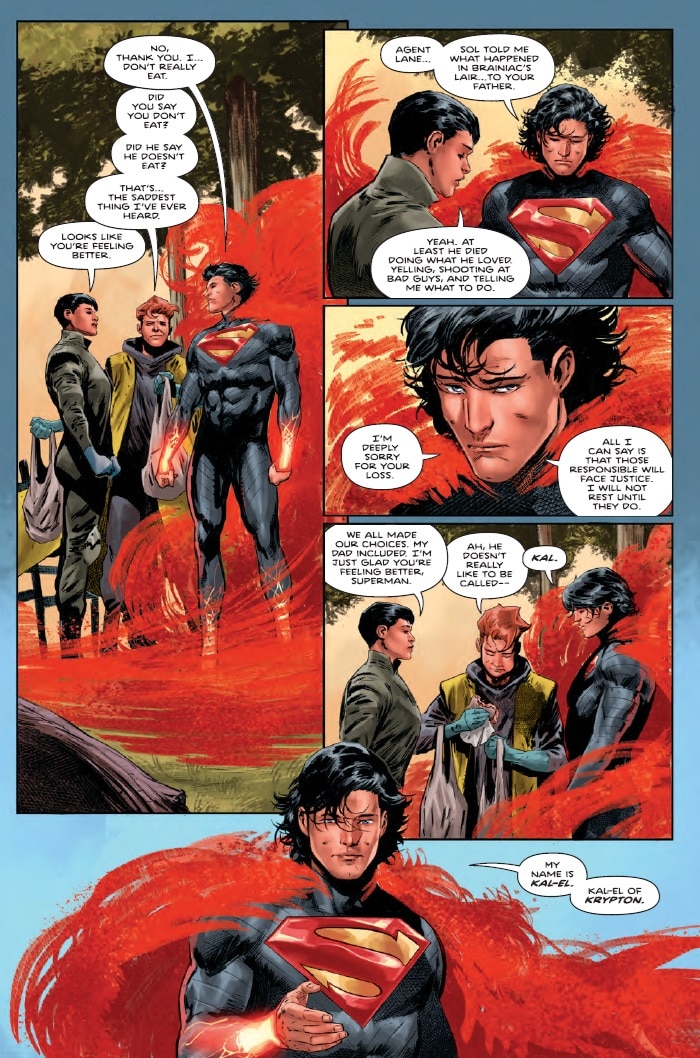
I could write more about that, but I won’t other than to say that in creating a Man of Steel who struggles to keep his rage in check as people try using it to manipulate him, Aaron has aced the assignment. He truly has created a Superman for today. Which means that today’s readers would do well to pay attention to both the lessons to be learned and inspiration to be taken from Absolute Superman. In the book’s most recent issue, Kal-El lets go of his rage after it nearly drives him to kill Brainiac. While we haven’t yet seen the results of this, it all but ensures that Lazarus’ strategy is bound to fail. It also allows Kal-El to finally open himself up to Lois Lane and Jimmy Olsen, who have been trying their best to help him ever since they first met him.
It's a very subtle way of choosing love and connection over anger, but in a highly flawed world like ours—and like the Absolute universe—it manages to speak volumes. This new Kal-El will probably never represent the ideal that the mainline Superman does. Instead, he represents something different and equally valuable: an acceptance that we have plenty of reasons to be angry at the world, but we must try to let that go and work with others to make it a better place regardless. We may stumble every now and then, but that’s because we’re all imperfect. In other words, when it comes to good and evil, there are no Absolutes.
Tim Beedle covers movies, TV and comics for DC.com, writes our monthly Superman column, "Super Here For...", and is a regular contributor to the Couch Club, our recurring television column. Follow him on Bluesky at @TimBeedle and on Instagram at @notabard.
NOTE: The views and opinions expressed in this feature are solely those of Tim Beedle and do not necessarily reflect those of DC or Warner Bros. Discovery, nor should they be read as confirmation or denial of future DC plans.
